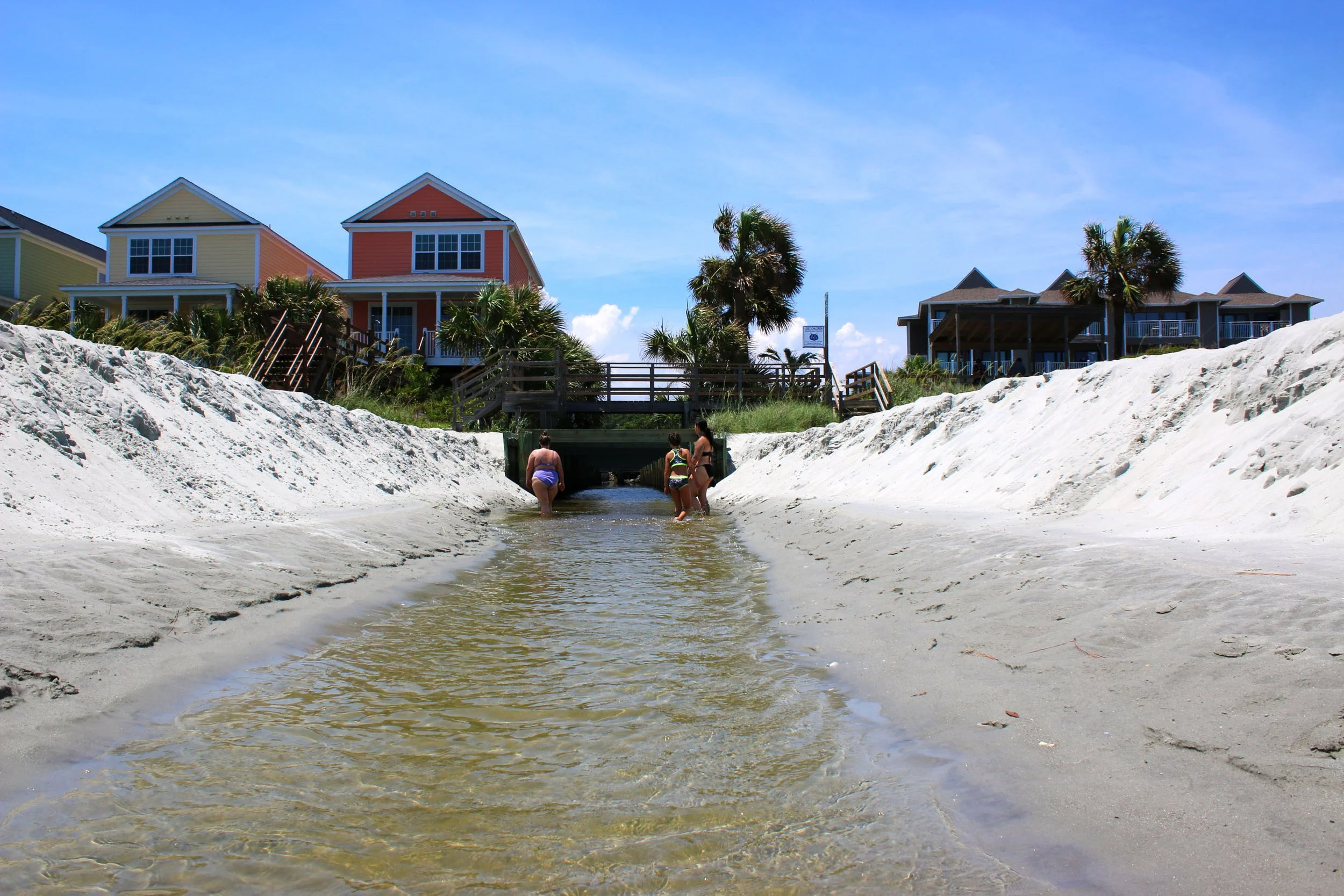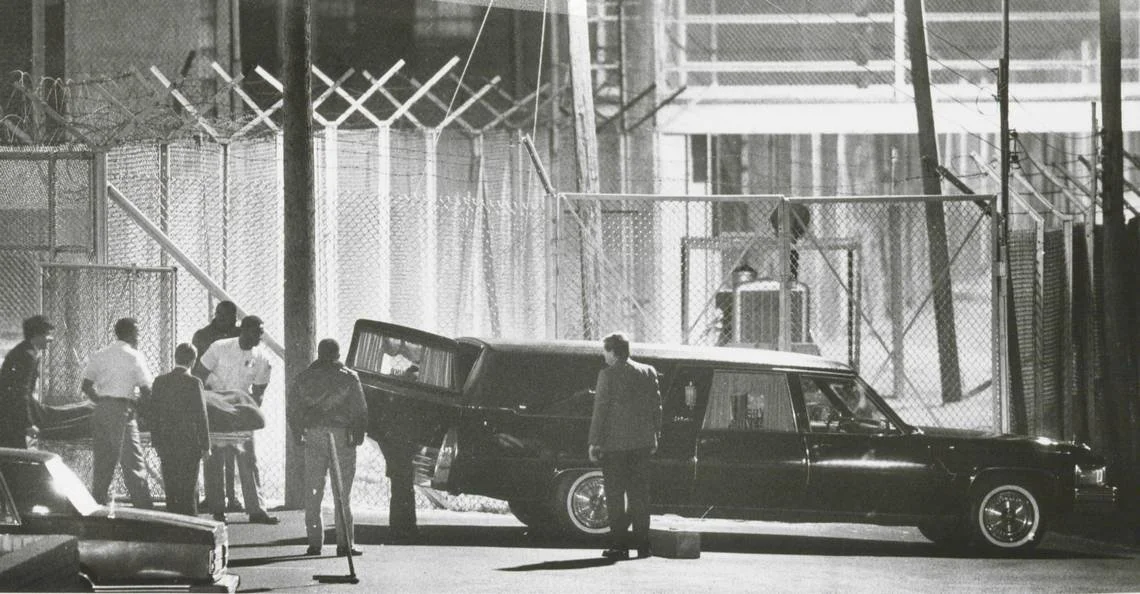
Myrtle Beach, SC
July 2021
Ridgeland, SC
Population: 1488
Founded: 1986
Who Owns It and General Facts:
SC state owns it
Has housed South Carolina's death row inmates since April 12, 1997
Land History :
This podcast is a conversation between father and son exploring their South Carolina heritage as they discuss current events. Their recent trip through the Low Country region serves as a background and inspiration for their conversation's unique perspectives. Their ancestral home is in Ridgeland, SC.
Combahee, Wimbee, Kussah, Edisto, and Touppa tribes were native to Jasper County, SC, where the Lieber Correctional Facility now stands. (Waddell, 3)
Gene Waddell analyzed what happened to the coastal tribes in Indians of the South Carolina Lowcountry. His information is based on a census taken in 1682 of the number of archers in six coastal tribes. (Waddell,10) He estimated that 1,000 Coastal Indians existed in 1682. Waddell then worked backward and stated that about 1,750 Coastal Indians (men, women, and children) in 1562. By 1751, no more than 250 Indians were left from the original 19 indigenous coastal tribes.
In the first couple hundred years of contact with Europeans, nearly six of every seven Native Americans on the lower coast died of causes directly related to the colonizers. (Waddell,14)
Ridgeland was initially known as "Gopher Hill" in 1894, derived from the gopher tortoise, indigenous to the area. The area hosts a Gopher Hill Festival every year. While they can still be found in the rural areas of Jasper County, they are no longer abundant and are now a protected endangered species. (Discover SC tourism)
South Carolina was the first state to secede from the United States during the Civil War. (History House)
The Lowcountry of South Carolina, Charleston, saw the first shots of the Civil War. In response to P.G.T. Beauregard, a militia commander opened fire on Fort Sumter, Charleston, SC, shortly after 4:30 a.m. on April 12, 1861. U.S. Captain Abner Doubleday -later famous for the myth that he invented baseball—returned with the first shots in defense of the fort a few hours later. (History)
Angelina Grimkè Weld, from the Lowcountry of SC, was an abolitionist, political activist, women's rights advocate, and supporter of the Women's Suffrage Movement. She and her sister Sarah Moore Grimké are the only white Southern women who became abolitionists. They toured the country as speakers for the American Anti-Slavery Society. In 1838, Angelina became the first woman to address a legislative body when she spoke to the Massachusetts State Legislature on women’s rights and abolition. (Michals)
Septima Poinsette Clark was a Black educator and civil rights activist born in Charleston, SC. Clark created literacy and citizenship workshops that played a huge role in the drive for voting rights and civil rights. Clark expanded her education during summer breaks. In 1937 Clark studied under W. E. B. Du Bois at Atlanta University before eventually earning her BA (1942) from Benedict College in Columbia, and her MA (1946) from Virginia’s Hampton Institute. Clark also worked with the YWCA and participated in a class-action lawsuit filed by the National Association for the Advancement of Colored People (NAACP) that led to pay equity for Black and white teachers in South Carolina. In 1956, South Carolina passed a statute that prohibited city and state employees from belonging to civil rights organizations. After 40 years of teaching, Clark’s employment contract was not renewed when she refused to resign from the NAACP. (Clark, Septima Poinsette | The Martin Luther King, Jr., Research and Education Institute)
“By the time of her firing in 1956, Clark had already begun to conduct workshops during her summer vacations at the Highlander Folk School in Monteagle, Tennessee, a grassroots education center dedicated to social justice. Rosa Parks participated in one of Clark’s workshops just months before she helped launch the Montgomery Bus Boycott. After losing her teaching position, Myles Horton hired Clark full-time as Highlander’s director of workshops. Believing that literacy and political empowerment are inextricably linked, Clark taught people basic literacy skills, their rights and duties as U.S. citizens, and how to fill out voter registration forms. “ (Clark, Septima Poinsette | The Martin Luther King, Jr., Research and Education Institute)
“The greatest evil in our country today is not racism, but ignorance,” Clark wrote in 1965. By bringing education to the struggle for civil rights, Clark fought both. (Blakemore)
Septima Poinsette Clark died at 89 years old on Johns Island.
“Flier for Septima P. Clark’s campaign
In 1972, Septima Clark was elected to the Charleston County School Board. She became the first woman to serve on the board and the only African American at the time. Sixteen years earlier, in 1956, members of the same board had dismissed Clark from a teaching position because of her affiliation with the NAACP.”
Unusual Facts:
A SC bill was approved 66-43, requiring condemned inmates to choose either being shot or electrocuted if lethal injection drugs aren't available. The state is only nine to use the electric chair still and will become only the fourth to allow a firing squad. Lieberman is one of the four prisons in the state that execute inmates. (Hansen)
South Carolina is one of 28 states that stop unions from requiring workers to join up as a condition of employment, and has the lowest proportion of union workers, at 1.6 % ( Bureau of Labor Statistics)
Some employees at the South Carolina Department of Juvenile Justice have walked out to protest in June 2021, saying working conditions within the state agency are poor. Multiple employees stood outside the DJJ facility on Broad River Road Friday to get attention for what they feel are problems with staffing shortages, lack of security, and pay. Some held signs, while others talked to reporters to tell stories of what they say is happening behind the agency's walls that house juvenile criminal offenders. (Adcox and Fastenau)
Joseph Carl Shaw was an American convicted murderer from Kentucky who was the first person to be executed by South Carolina after the U.S. Supreme Court reauthorized capital punishment by the states in 1976. (LA Times Archives)
Attendants placed the body of Joseph Carl Shaw in a hearse after he was executed in 1985. THE STATE NEWSPAPER ARCHIVES AT RICHLAND LIBRARY
South Carolina native Mary McLeod Bethune worked as a special adviser on minority affairs under President Franklin Roosevelt, establishing national conferences on issues facing the Black community. Born to formerly enslaved people in 1875 in Sumter County, SC (about an hour and a half from Ridgeland) she saw education as a way out of poverty for Black people. She taught in Savannah, Georgia and parts of South Carolina before moving to Florida and opening her own school, which would become Bethune-Cookman University. She served as president of the State Federation of Colored Women's Clubs, working to end school segregation and improve health care for Black children, and in 1935, she founded the National Council for Negro Women.
Shortly before her death in 1955, Bethune wrote her “Last Will and Testament” detailing her “principles and policies in which I believe firmly, for they represent the meaning of my life's work. They are the products of much sweat and sorrow.” Among these principles are love, hope and faith in one another, respect for the uses of power, racial dignity and “thirst for education. Knowledge is the prime need of the hour.”
Bethune’s portrait hangs in the South Carolina State House.
Mary McLeod Bethune
The Carolina Youth Action is a youth abolition group in Charleston, SC : “We envision a South Carolina transformed by the radical organizing of girls, trans youth, and gender-nonconforming youth, where our communities work collectively to dismantle the existing structures of domination, violence, and punishment that shape their lives and create spaces for growth and healing in their place.” https://www.scyouthaction.org/mission-vision
Greenwood, SC
Name: Leath Correctional Institution
Population: 656 (female)
Founded: 1991
Who Owns It and General Facts:
SC state owns it
The institution has a braille production center. Incarcerated women work to transcribe text to braille student k-12. (Leath Correctional Website)
In the early 1990s a company called Third Generation contracted the manufacture of women's underwear to 35 Leath prisoners. These prisoners produced about $1.5 million worth of clothing. J.C. Penney, Victoria's Secret, and other companies bought this underwear for resale. This was revealed in a 1995 National Institute for Justice study. The contract was terminated by the mid-1990s. (Sexton)
Land History :
In South Carolina, freedmen took advantage of their political rights more than in any other Southern state. 60% of the state’s voting population, they elected 73 African Americans out of 124 total delegates to the 1868 Constitutional Convention. (Sheffey)
The Phoenix election riot occurred on November 8, 1898, in Greenwood County, South Carolina, when a group of local white Democrats attempted to stop a Republican election official from taking the affidavits of African Americans who had been denied the ability to vote. The race-based riot was part of many efforts by white conservative Democrats to suppress voting by Blacks, as they had primarily supported the Republican Party since the Reconstruction era. (Wilk)
Tom Tolbert, who led the protest, was shot multiple time. He remained standing, though, and just before he ran, he reportedly turned to the crowd and shouted, "I have not a friend left at my back. You have shot me nearly to death, but you have not changed my politics one iota." In the days following, bands of armed whites scoured the countryside in search of victims. They drove the Tolbert’s from their homes and lynched four black men in the shadows of Rehoboth church, where the Tolbert’s and many other local whites worshipped. At least eight African Americans, and perhaps many more, were killed in the following weeks. No one was ever charged with the crimes. (Wilk)
From the days following the Phoenix Election Riot
Laurens County by birth, Wil Lou Gray, a white woman, dedicated her time to eliminating illiteracy in South Carolina, forging the idea of adult education programs. After graduating from Columbia College in 1903, Gray taught school in rural Greenwood County where the upper-class daughter of a lawyer got her first experience of the poverty and illiteracy rampant in turn-of-the-century South Carolina. She did graduate work at Vanderbilt and Columbia University in New York, earning a master’s degree in political science in 1911. She created an adult night school in 1915 while she was serving as a school supervisor in Laurens County and worked with the South Carolina Illiteracy Commission right after World War I. (Ivey) She also undertook a successful social experiment in 1931 to prove that Black people were just as capable of learning as whites. As the supervisor of Adult Schools for the South Carolina Department of Education between 1919 and 1935, she said South Carolina could not prosper unless it gave equal financial support to the education of African Americans. Her pleas brought race and illiteracy center- stage as impediments to state progress. (Montgomery)
Wil Lou Gray
Unusual Facts:
Mayor Welborn Adams of Greenwood and the local American Legion raised $15,000 for new plaques on the town’s war memorial to replace ones that designate the dead from World Wars I and II as either “Colored” or “White.” He was threatened with arrest and accused of whitewashing. (LA Times)
Susan Smith, who murdered her children and her case got national attention, was incarcerated at Leath for a time.
James Brown the legendary singer, songwriter, dancer, record producer, and bandleader was born in Born in Barnwell, SC.
Monica F. Helms is an American transgender activist, author, and veteran of the United States Navy. She is the creator of the Transgender Pride Flag .She was born in and grew up in Sumter, SC.





